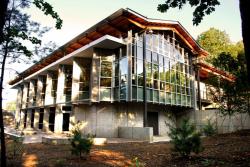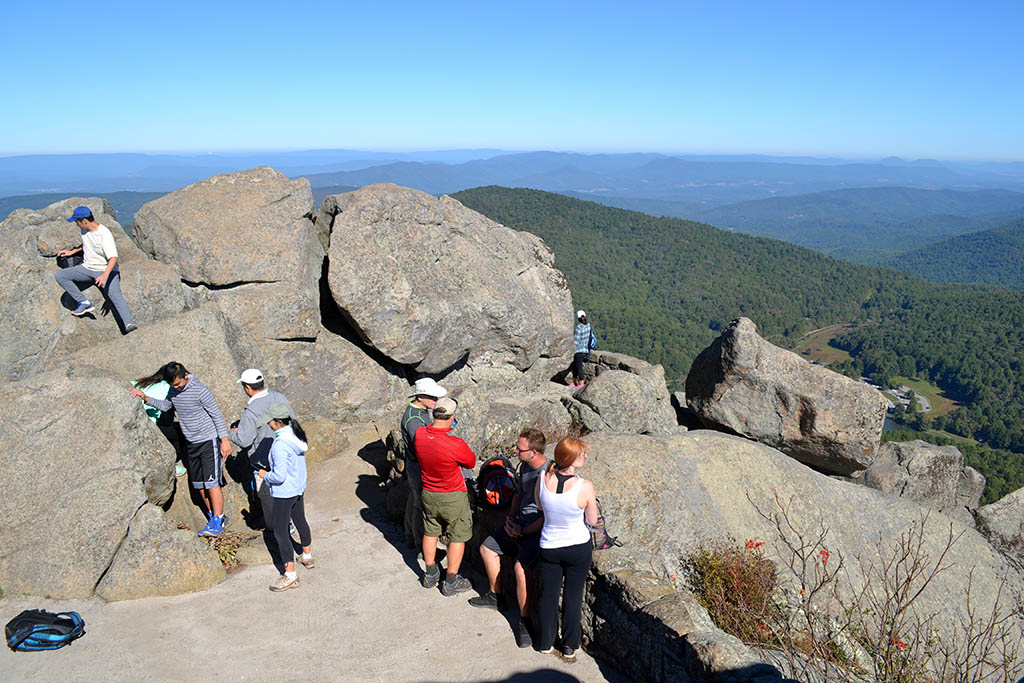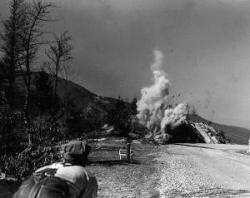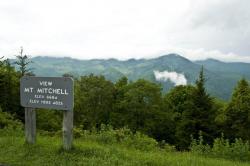The Blue Ridge Parkway inside and out
 The Blue Ridge Parkway was the first national rural parkway to be conceived, designed, and constructed for a leisure-type driving experience. Its varied topography and numerous vista points offer easy public access to spectacular views of central and southern Appalachian rural landscapes and forested mountains. It connects Shenandoah National Park in Virginia with Great Smoky Mountains National Park in North Carolina.
The Blue Ridge Parkway was the first national rural parkway to be conceived, designed, and constructed for a leisure-type driving experience. Its varied topography and numerous vista points offer easy public access to spectacular views of central and southern Appalachian rural landscapes and forested mountains. It connects Shenandoah National Park in Virginia with Great Smoky Mountains National Park in North Carolina.
As an example of pre- and post-World War II automotive rural parkway design, the Blue Ridge Parkway retains the greatest degree of integrity of any parkway in the United States. The Parkway is recognized around the world as an international example of landscape and engineering design achievements with a roadway that lies easily on the land and blends into the landscape.
The Parkway is the highest and longest continuous route in the Appalachian area. Along its 469-mile length, it provides scenic access to crests and ridges of five major ranges within the central and southern Appalachian Mountains, encompassing geographic and vegetative zones that range from 649 feet at James River in Virginia to 6,047 feet at Richland Balsam in North Carolina.
In 2022, more than 15.7 million park visitors spent an estimated $1.3 billion in local gateway regions while visiting the Parkway. It is a primary catalyst for promoting regional travel and tourism, serving as a unifying element for 29 counties through which it passes, engendering a shared regional identity, providing a common link of interest, and being a major contributor to regional economic vitality.
Park Information & Maps
 Visit the Park Website or View Operation Hours & Seasons
Visit the Park Website or View Operation Hours & Seasons
Reach the park information line at (828) 298-0398.
Be sure to stop in at a Blue Ridge Parkway Visitor Center along the way for camping, hiking, and more information about activities and sites along the route, or visit the National Park Service's plan your visit page.
Learn more about accessiblity at Parkway sites.
Road Closures
Before you set out for a drive, ride, or hike on the Blue Ridge Parkway, check the National Park Service’s closure announcement page. Road closures
Insider's Report Webinar Series
Stay connected to the Blue Ridge Parkway and the important work you make possible with the Insider’s Report webinar series. We hope you will join us to learn more about the park you love!
 In 2023, the Blue Ridge Parkway welcomed an estimated 16,667,171 recreation visitors, making it the most visited national park in the country. That is more visitors than the Grand Canyon, Yellowstone, and Yosemite national parks combined for the same year. Review the Blue Ridge Parkway's
In 2023, the Blue Ridge Parkway welcomed an estimated 16,667,171 recreation visitors, making it the most visited national park in the country. That is more visitors than the Grand Canyon, Yellowstone, and Yosemite national parks combined for the same year. Review the Blue Ridge Parkway's 
 Blue Ridge Parkway Timeline
Blue Ridge Parkway Timeline